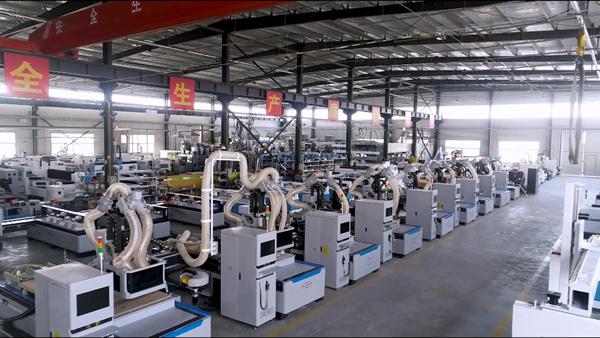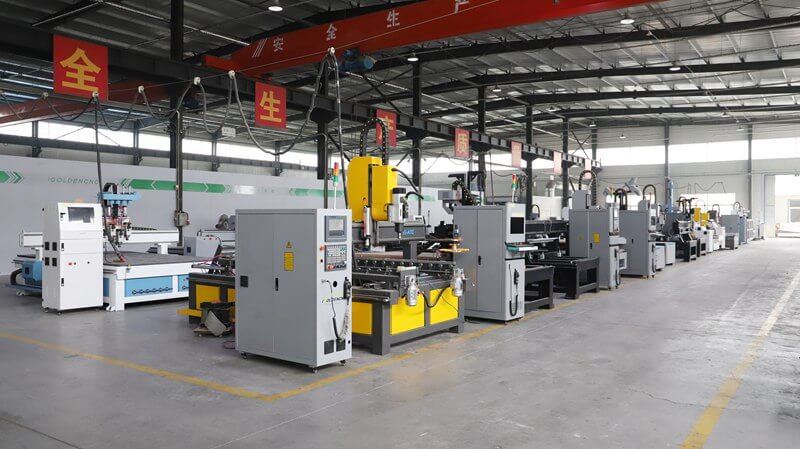CNC routers have revolutionized woodworking, metalworking, and various other industries by enabling precise, automated cutting, carving, and engraving tasks. Whether you’re a seasoned professional or a DIY enthusiast, understanding the ins and outs of CNC routers is essential for unlocking their full potential. In this comprehensive guide, we’ll delve deep into the world of CNC routers, covering everything from their basic principles to advanced techniques. By the end, you’ll be equipped with the knowledge and skills to master CNC routing like a pro.

CNC Router
1. Understanding CNC Routers: CNC routers are computer-controlled machines used for cutting, carving, and engraving various materials, including wood, plastics, metals, and composites. They operate based on digital designs (CAD files) that specify the desired cuts, shapes, and toolpaths. CNC routers consist of three main components: the control system, the router spindle or cutting tool, and the worktable. By precisely following the instructions in the CAD file, CNC routers can produce complex shapes and intricate designs with unparalleled accuracy.
2. Types of CNC Routers: There are several types of CNC routers, each designed for specific applications and materials. These include:
- Woodworking CNC routers
- Metalworking CNC routers
- 3-axis, 4-axis, and 5-axis CNC routers
- Desktop CNC routers
- Industrial CNC routers
Each type has its unique features, capabilities, and limitations, so it’s essential to choose the right CNC router for your specific needs.
3. Applications of CNC Routers: CNC routers find applications across various industries, including:
- Woodworking: Furniture making, cabinetry, sign making
- Metalworking: Fabrication, prototyping, aerospace
- Plastic fabrication: Prototyping, packaging, molds
- Foam cutting: Packaging, insulation, props
- Composite materials: Aerospace, automotive, marine
The versatility and precision of CNC routers make them indispensable tools in modern manufacturing and craftsmanship.
4. Choosing the Right CNC Router: When selecting a CNC router, consider factors such as:
- Size and capacity
- Spindle power and speed
- Bed type (fixed or moving gantry)
- Control system (open-source or proprietary)
- Budget and ROI considerations
By evaluating these factors and understanding your specific requirements, you can choose the CNC router that best suits your needs.
5. Setting Up Your CNC Router: Proper setup is crucial for achieving accurate and reliable results with your CNC router. This includes:
- Assembling the machine components
- Installing and calibrating the router spindle
- Securing the workpiece to the bed
- Loading and configuring the CNC program
- Conducting test runs to ensure proper operation
Taking the time to set up your CNC router correctly will pay off in terms of efficiency and quality of output.
6. Operating Your CNC Router: Operating a CNC router involves:
- Loading the design file into the CNC control software
- Setting toolpaths and cutting parameters
- Initiating the cutting process
- Monitoring the operation for any issues
- Unloading the finished workpiece
Familiarizing yourself with the CNC control software and understanding the basics of toolpath generation are essential for successful CNC operation.
7. Advanced Techniques and Tips: To take your CNC routing skills to the next level, consider exploring advanced techniques such as:
- 3D machining and contouring
- Toolpath optimization for efficiency
- Multi-tool operations
- Nesting and material optimization
- CNC router accessories and enhancements
By mastering these advanced techniques, you can unlock new possibilities and increase productivity with your CNC router.
8. Maintenance and Troubleshooting: Regular maintenance is essential for keeping your CNC router in optimal condition. This includes:
- Cleaning and lubricating machine components
- Checking and replacing worn-out cutting tools
- Calibrating machine settings
- Performing routine inspections for signs of wear or damage
Additionally, knowing how to troubleshoot common issues such as tool breakage, poor cut quality, or software errors can help minimize downtime and maximize productivity.
9. Safety Considerations: Safety should always be a top priority when operating CNC routers. Some essential safety considerations include:
- Wearing appropriate personal protective equipment (PPE)
- Securing workpieces and using proper clamping techniques
- Following safe operating procedures and machine guidelines
- Conducting regular risk assessments and implementing safety protocols
- Providing training and supervision for machine operators
By prioritizing safety measures, you can create a safe working environment and prevent accidents or injuries associated with CNC routing operations.
10. Future Trends in CNC Routing: The future of CNC routing is shaped by emerging technologies and advancements such as:
- Integration of AI and machine learning for predictive maintenance and optimization
- Development of hybrid manufacturing systems combining additive and subtractive processes
- Adoption of cloud-based CAD/CAM software for seamless collaboration and remote operation
- Evolution of materials and tooling technologies for enhanced performance and versatility
By staying abreast of these trends, you can position yourself at the forefront of CNC routing innovation and seize new opportunities in the industry.

Conclusion: CNC router have transformed the way we cut, carve, and create, offering unparalleled precision, efficiency, and versatility. Whether you’re a hobbyist, a small business owner, or a large-scale manufacturer, mastering CNC routing opens up a world of possibilities for innovation and craftsmanship. By understanding the principles, applications, operation, maintenance, and safety considerations of CNC routers, you can unleash your creativity and achieve remarkable results in your projects. With this comprehensive guide as your companion, you’re well on your way to becoming a CNC routing expert.

IGOLDEN BLOG
Thank you for visiting the iGOLDENCNC website. iGOLDENCNC is the professional supplier of CNC machinery application solution, within the business of producing and selling CNC machinery and accessories.